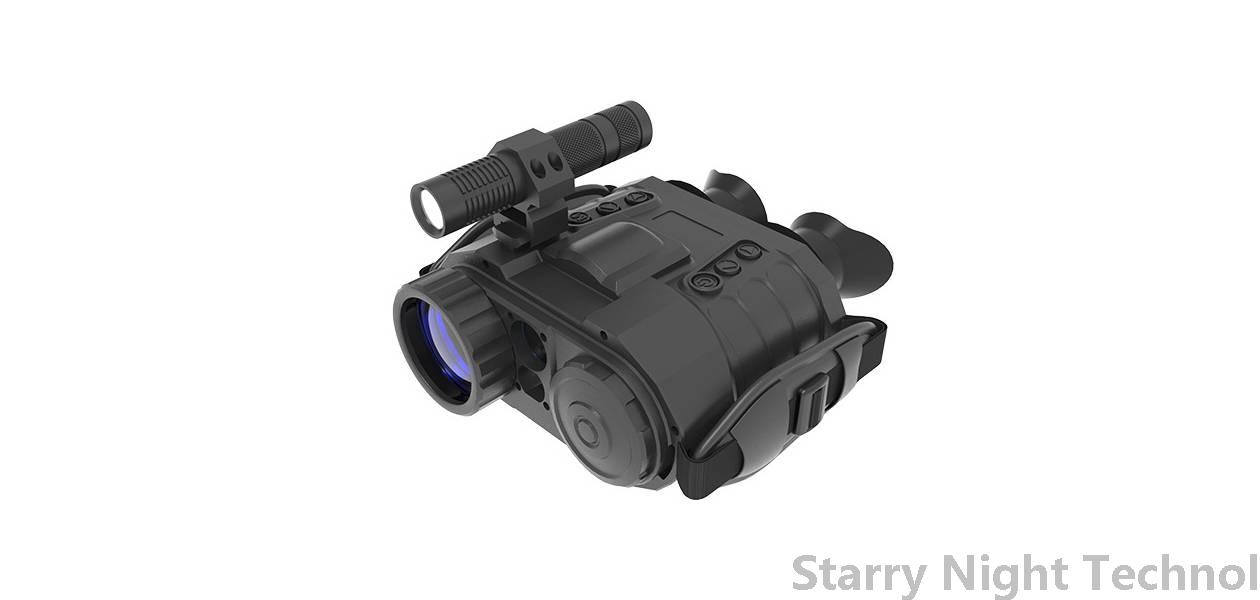Transforming Nighttime Operations with Advanced Vision Tech
1763294550000

As technology continues to advance at an unprecedented pace, the landscape of nighttime operations across various industries is undergoing a significant transformation. From warehouses and manufacturing facilities to transportation services and emergency response teams, innovations in vision technology are improving efficiency, safety, and productivity during hours when visibility traditionally poses the greatest challenges.
#### The Challenges of Nighttime Operations
Nighttime operations come with unique sets of challenges. In various environments, reduced light can hinder visibility, increase risks associated with accidents or errors, and complicate complex tasks requiring precision and coordination. This becomes particularly problematic in sectors such as logistics where timely deliveries are critical, or in emergency services where quick reactions can save lives. Historically, organizations had limited strategies for coping with these issues – often relying on basic lighting solutions that proved inadequate over time.
However, advancements in vision technology promise to help overcome many of these obstacles by enhancing the ability to see clearly in low-light conditions, thereby ensuring operational continuity even after sunset.
#### Enhanced Illumination Solutions
At the forefront of transforming nighttime work is modern illumination technology. Traditional incandescent and fluorescent lights have largely been replaced by LED (Light Emitting Diodes) systems due to their energy efficiency, longevity, and customizable brightness levels. Innovations go beyond mere enhancement; newer solutions involve adaptive lighting systems that adjust intensity based on real-time assessments of environmental factors.
Additionally, phosphor-coated LEDs can provide more natural light spectra, which significantly reduces eye strain and increases visual comfort during nighttime tasks. These improved lighting systems not only create safer workplaces but also promote better productivity and mood among employees who may otherwise struggle under dim conditions.
#### Night Vision Technology
Beyond traditional lighting methods, night vision technology has taken center stage in transforming operations conducted after dark. Originally developed for defense purposes, this kind of tech has permeated various commercial applications. Next-generation thermal imaging cameras and night vision spectacles now empower workers in fields ranging from law enforcement to oil drilling to detect and respond to situations that would be invisible with the naked eye.
For example, within the context of warehousing, distribution centers equipped with thermal-vision-enabled cameras can monitor inventory activities without disturbing ongoing operations, even during the darkest hours. Detecting heat signatures allows operators to identify potential equipment failures, unauthorized intrusions, and compliance with safety standards promptly.
 The incorporation of artificial intelligence (AI) into nighttime operations enhances capabilities exponentially. Integrating advanced algorithms with vision technology allows facilities to automate many processes previously reliant upon human sight. For instance, computer vision systems can analyze video feeds from security cameras and immediately alert personnel to suspicious activity—crucial for protecting assets during off-hours.
The incorporation of artificial intelligence (AI) into nighttime operations enhances capabilities exponentially. Integrating advanced algorithms with vision technology allows facilities to automate many processes previously reliant upon human sight. For instance, computer vision systems can analyze video feeds from security cameras and immediately alert personnel to suspicious activity—crucial for protecting assets during off-hours.Moreover, AI-driven object recognition enables intuitive operation of autonomous vehicles used in material handling. By using machine learning models that understand movement patterns of staff and machinery, these systems can navigate through crowded warehouses safely. Such features diminish risk substantially, leading to added confidence while operating machinery or conducting transport routines at night.
#### Drones: A New Frontier
One of the most exciting developments in nighttime operations comes in the form of drones fitted with advanced vision technologies. Modern-day drones can cover expansive areas quickly and efficiently—a vital asset for inspection-related services in agriculture, infrastructure maintenance, surveillance, and search-and-rescue missions. Equipped with both thermal imaging and high-definition infrared cameras, these unmanned aerial vehicles (UAVs) can operate effectively even in total darkness.
For example, in agricultural settings, farmers utilize drones outfitted with hyperspectral sensors to assess crop health late into the night, identifying issue areas that require immediate attention or adjustments transferably onto a mobile interface. Similarly, firefighters employ drone technology for mapping wildfires more accurately, providing crucial situational awareness to command units overseeing fire mitigation efforts.
#### Improving Safety Protocols
Lastly, the integration of advanced vision technology offers a significant advantage regarding workplace safety regulations. Organizations adopting appropriate tools document systematic enhancements made to maintain compliance with occupational safety guidelines during nighttime shifts. Training sessions specifically designed around new technologies ensure employees embrace safe practices while also benefiting from increased visibility and awareness of their environment.
Furthermore, predictive analytics powered by data generated from vision tech allow companies to forecast potential safety hazards before they occur, equipping teams to take preventive measures proactively rather than reactively responding once incidents unfold.
#### Conclusion
In summation, the ongoing evolution of advanced vision technologies presents substantial improvements to nighttime operations across diverse sectors. As industries increasingly rely on enhanced lighting systems, night vision technology, AI integration, and drone functionalities, the future will witness heightened levels of efficiency, safety, and overall performance—where moonlit undertakings mirror, if not surpass, their daytime counterparts. Continued investment and development in these technological arenas promise bright prospects for all businesses venturing into the realm of nocturnal labor, driving forth innovation in a world that never sleeps.
Which is a good supplier for night vision device accessoriesStarry Night Technol

